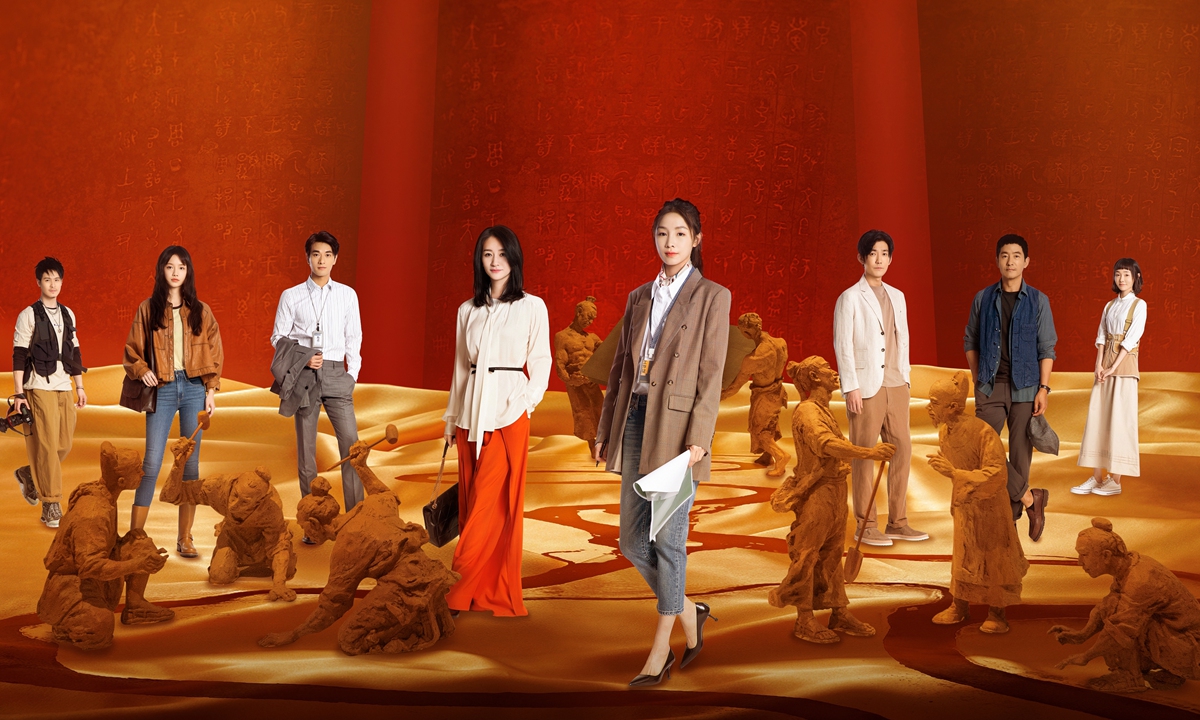
Promotional material for Hi Producer Photo: Courtesy of Huanyu
Newly released Chinese drama Hi Producer has captured the attention of Chinese audiences with its special perspective on traditional Chinese arts. Focusing on the production of a cultural feast that showcases the beauty and diversity of China's intangible cultural heritage, the show explores various aspects of traditional crafts, such as lacquerware, ancient women's clothing and UNESCO-listed kesi, a traditional silk tapestry weaving technique, with the help of more than 50 celebrities.
The drama tells the story of artistic director Yu Zaizao and young cultural relics expert Tao Tang as they work together to produce a TV variety show that showcases the beauty of Chinese civilization.
The project involves selecting and adapting some of the most representative examples of Chinese intangible cultural heritage, such as folk music, opera, shadow plays and paper cutting.
"The intangible cultural heritage we've involved in our production include kesi, ancient Chinese makeup, women's clothing, bronzeware, lacquerware, woodblock seals and even gardens and furniture from the Ming Dynasty [1368-1644]," director Li Jianfeng told the Global Times.
To best represent this heritage, the production team worked with experts and heritage practitioners who shared their insights and skills.
The drama is based on the real cultural relics from the Suzhou Museum in Suzhou, East China's Jiangsu Province. It is also the first Chinese TV drama filmed at the museum. It also features many historical sites and intangible cultural heritage museums in Suzhou.
For the film crew, the city was the perfect location for the show.
Suzhou is home to many forms of intangible cultural heritage, such as Kunqu Opera, silk weaving, embroidery, paper cutting, lantern making and many more. These cultural treasures showcase the history, creativity and vitality of eastern China.
Considered one of the highest achievements of Chinese culture and art, Suzhou gardens are especially renowned for their exquisite design, elegant buildings and harmonious integration of natural and artificial elements.
"My first impression of Suzhou gardens is that they are light and elegant. They are like traditional Chinese watercolor paintings. They have a poetic and picturesque feeling of lightness and moisture, which helps establish the unique artistic style of this drama," the show's art director Luan Hexin told the Global Times.
"And plus, we gained massive support from the local museums in Suzhou during our filming."
Just as sci-fi has become one of the most popular film and television drama genres in China with the help of literary adaptations, Chinese film and television dramas are capitalizing on intangible cultural heritage to grab the audiences' attention.
For example, with the popularity of the TV series A Dream of Splendor, chabaixi, a type of traditional tea making that has been embraced by a small group of enthusiasts, has become a hot topic. In a similar way, the animated film I Am What I Am puts the traditional lion dance under the spotlight, igniting the public's love for traditional dance culture.
Meanwhile, Hi Producer gathers the country's most profound art forms and brings them in front of viewers in a package, while also showing the dilemmas inheritors face as they struggle to pass on their skills.
"This inheritance is beautifully shot," wrote one viewer in a review of the show.
"That is what we want to show to the audience: the inheritance of the traditional Chinese aesthetics," noted Luan.
